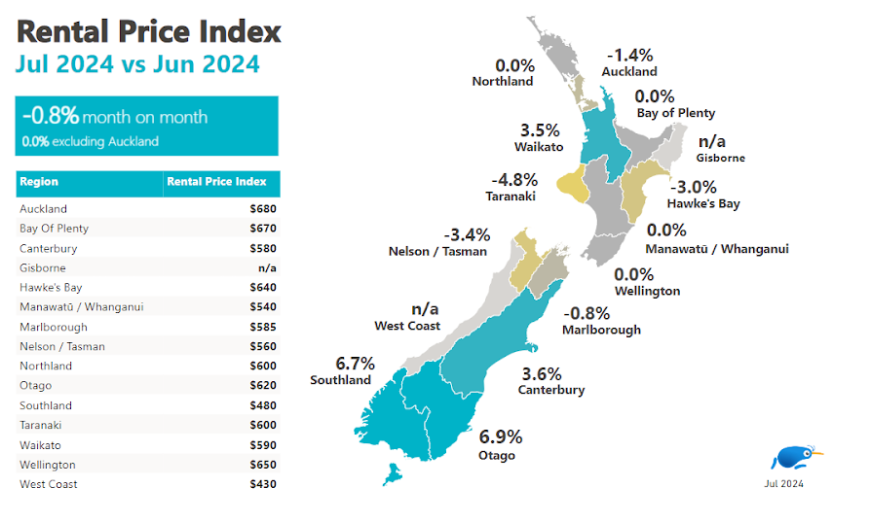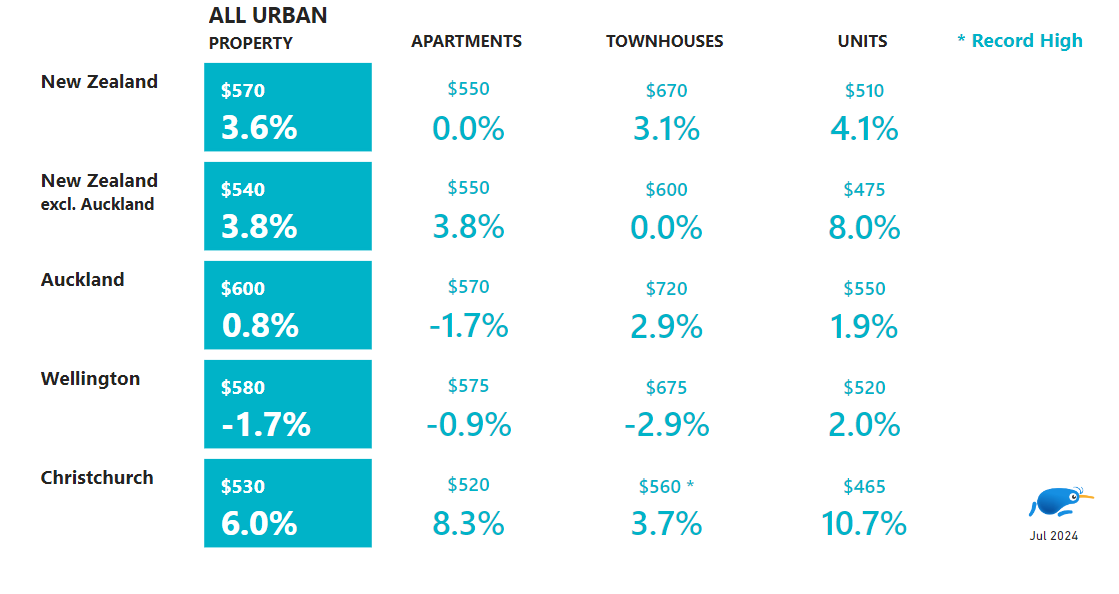News Next article
Rental listings skyrocket as prices fall, again
Rental Price Index July 2024
28 August 2024The colder winter months have coincided with cooling rental prices according to Trade Me’s latest Rental Price Index which shows New Zealand rents have fallen for the second month in a row.
New data shows the national median weekly rent is down 0.8 per cent from $645 in June to $640 in July - it marks the first time in more than two years back-to-back falls have been recorded.
Trade Me Property’s Customer Director Gavin Lloyd says while any decrease is positive for tenants, it may have limited impact after numerous increases over the past 12-months.
"In the current economic environment any reduction in rent is sure to come as welcome news but the reality is rental prices are still $20 higher than they were this time last year and we’d need another four months of decreases to get back to where we started.
“Only time will tell whether prices will follow the usual seasonal pattern and pick up come Summer or whether rising unemployment and a stagnant economy will suppress rents heading into the high season.”
Supply outpaces demand
The easing pressure on renters’ pockets comes as supply soars.
Rental listings on site skyrocketed in July to reach the highest number since 2019 (when Trade Me started recording data) and represent an 11 per cent increase compared to June and 46 per cent year-on-year.
The regions driving the high supply include Gisborne up 124 per cent year-on-year, the West Coast (68%) Hawke’s Bay (63%), Auckland (62%) and the Bay of Plenty (59%).
“While there’s plenty of supply, renters in some regions may have a tougher time securing a place, particularly those in Gisborne, Marlborough, Otago and Nelson where demand is outpacing supply.
“If we take Nelson as an example, demand across June and July is up 23 per cent while supply increased two per cent making it an increasingly competitive market for those looking for a rental property.
“As rents rise we see tenants looking to offset the costs by squeezing more people into a property. Sharing rooms and converting living rooms becomes more commonplace which is one factor likely contributing to high supply,” says Lloyd.
While demand improved four per cent on the month prior it remains 27 per cent down on the same time last year.
A tale of two motu
While the country’s North Island remains more expensive for renters with the top three spots being Auckland at $680 per week, Bay of Plenty at $670 and Wellington at $650 the year-on-year increases are comparatively modest to the South.
The Otago region led the pack with rent increasing 15.9 per cent year-on-year to $620, followed by Waikato at 7.3 per cent, Southland at 6.7 per cent, Nelson/Tasman at 5.7 per cent and Marlborough at 4.5 per cent.
“Rent in Canterbury also hit a new high in July reaching $580, a $20 increase on June 2024 with Ōtautahi tenants now paying $30 more than the same time last year.
“On the flip side, rent in Manawatu/Whanganui, Wellington and Taranaki recorded no change in the year to July 2024,” says Lloyd.
Record highs for townhouses and larger properties in the Garden City
Christchurch city continues to prove resilient in terms of month-on-month prices recording new highs for both townhouses and properties with five or more bedrooms.
Between June and July prices for 5+ bedrooms increased 12.1 per cent to $1,110 per week, a record high. Likewise, townhouses in Ōtautahi are also commanding top dollar, up 3.7 per cent to $560 per week. Units are also up more than 10 per cent over the same period.
“It’s interesting to compare what we are seeing in Christchurch to Auckland and Wellington. While the two North Island cities recorded falling prices for apartment rentals, Christchurch recorded a significant 8.3 per cent increase.
“Wellington also saw a 2.9 per cent decrease for townhouses which stands in stark contrast to the record prices we see for the same type of properties in Christchurch.
“That said, Christchurch remains significantly more affordable for tenants,” says Lloyd.
Other news you might like





